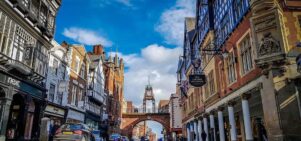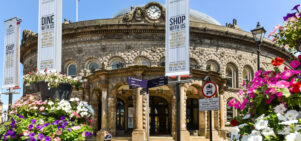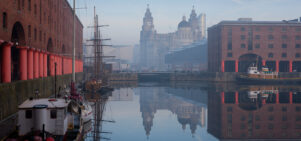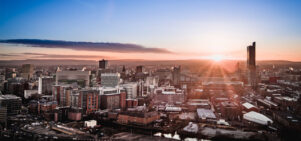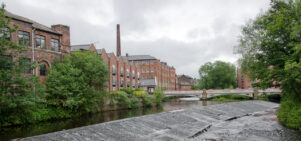Clocking on: Time and Motion at FACT, Liverpool
Susie StubbsWhen was the last time you worked an eight-hour day? An exhibition in Liverpool makes the case for a better work-life balance.
It’s dark out. It’s past my kids’ bedtimes. It’s gone 10pm and here I am, tap-tap-tapping away on a laptop that’s surely as cursed as Snow White after falling victim to a not-so-innocent apple’s charms. Which is ironic, really, as I’m writing about a new exhibition at FACT, one that examines the shifting nature of work, and which kicks off with a question. What happened to the eight-hour working day?
That the world of work is a-changing is not news to anyone. Technology, recession, globalisation: these are all things that have ushered in the sorts of working conditions – hello Amazon! – that we naively thought had long since disappeared. But while it might not be news, how and where we work has become rich artistic fodder. Consider Jeremy Deller’s current exhibition, or the opening show at The Tetley, or this, Time and Motion at FACT. Hard graft has become cultural catnip.
That the world of work is changing is not news. Hard graft has become cultural catnip.
It’s hardly surprising, at least to Mike Stubbs, FACT’s director and the main creative force behind Time and Motion. “Twenty-five percent of the UK’s working population admit that they start their working day while they’re still in bed. Things have moved a long way since the regulated workplace of my grandfather’s generation, and as we head towards Christmas and as people collapse into the break, it seemed like a good time to start asking questions about the work that leads us into exhaustion.”
One such question surrounds that eight-hour ideal. What’s Your Number, a game that forms part of the exhibition, asks users to split their life into three segments: work, rest and play. Ideally, you should spend eight hours on each. In reality, most gamers’ work-life balance is likely to be skewed. “It’s a provocation,” says Stubbs. “I don’t know many people who are satisfied with the balance they have between work and the rest of their lives.”
The title of the exhibition takes its name from a scientific method – the time and motion study – designed during the industrial era to help improve workplace efficiency. The show itself has a similarly scientific underpinning: What’s Your Number, for example, is part of an ongoing research project being conducted by the Royal College of Art’s Creative Exchange programme. “It’s active research. We’re not just pointing out what’s wrong with the way we work,” says Stubbs. “We want people to think about how they can make things better.”
So while there is criticism of companies such as Amazon and Google – Andrew Norman Wilson’s video exposing the different “classes” of workers at Google’s Silicon Valley HQ got him the sack, for example – it’s not all about sticking it to the man. “The exhibition looks at design and architecture; it asks how we can use digital technology in a way that actually works for us,” says Stubbs. Harun Farocki’s film, A New Product, is a good example: it documents a company trying to come up with a product that will, in the words of FACT’s curators, “allow employees greater independence, flexible attendance and a more adaptable workspace.” Cohen van Balen’s 75 Watt, by contrast, is intentionally useless. “He designed a product that had no purpose, had it manufactured in China using common production techniques – and then filmed the workers who made it,” says Stubbs of a video piece whose depiction of “industry”, of workers making something that wasn’t actually useful for anything, rings both true and false.
Filmmaker Harun Farocki made another contribution to the exhibition. Called Workers Leaving the Factory, his video piece spans over 100 years and does exactly what it says on the tin: its footage depicts workers leaving their place of work. It begins with Louis Lumière’s 1895 film of (almost) the same name. In it, mostly female factory works flood out of the factory gates at the end of the day, their corseted bodies spilling onto Lyon’s streets, their body language showing a mixture of relief, indifference, glee and exhaustion. It’s a piece of jerky, silent footage I can’t help coming back to. In the dead of my working night, I scan the faces of these long-gone labourers for a clue as to which is better: work then, or work now? Like the artworks on display in Time and Motion, there is no real answer. But if you want to know where the eight-hour working day went – well, there it goes.




